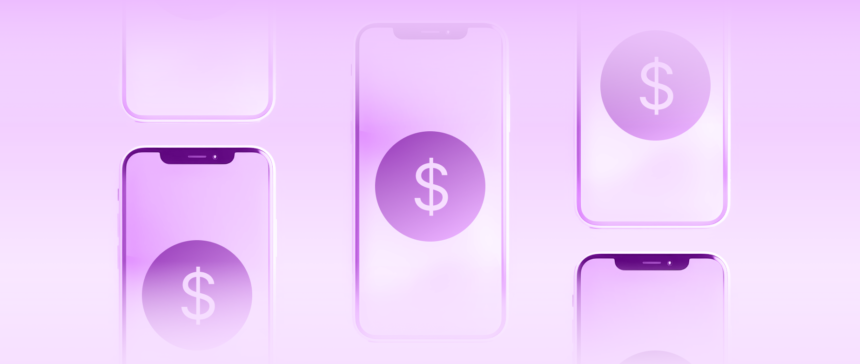Influencer marketing often is the most relevant way to reach an audience. The value generated by influencers has more than doubled in the past five years, with a quarter of brands now regularly collaborating with a social media content creator.
The case for hiring an influencer to promote your products is clear. But how much should an influencer cost?
There isn’t a standard way to measure influencer marketing performance, so it can be difficult to identify the most effective influencers for your brand, and agree on pricing.
To help, here’s the latest influencer pricing data for 2024, plus what to consider when agreeing to an influencer partnership.
How much does influencer marketing cost?
Influencer marketing rates are negotiated by individual creators and partner brands. That means they’re usually confidential and can vary depending on an influencer’s popularity.
That said, several social media analytics companies (including Influencer Marketing Hub, Izea, Meltwater, Hootsuite, and Later) have calculated estimated influencer rates from surveys and internal data. Based on those results, here’s what we know about the following:
Instagram influencer pricing
Instagram influencers can post about their visit to your hotel or restaurant, use your products in their daily Stories, or collaborate with your brand’s account to help it attract new followers.
There’s a generally accepted Instagram influencer rate of $100 per 10,000 followers.
That pricing can change based on the number of posts requested, the value of an influencer’s audience to a brand, and additional factors such as production expenses or exclusivity rights.
Based on surveys of Instagram influencers, the average sponsored Instagram post costs around $1,300. Estimated rates break down as follows:
- Nano-influencers (500–10,000 followers): $10 to $100 per post
- Micro-influencers (10,000–50,000 followers): $100 to $500 per post
- Mid-tier influencers (50,000–100,000 followers): $500 to $5,000 per post
- Macro-influencers (100,000–500,000 followers): $5,000 to $10,000 per post
- Mega-influencers (500,000+ followers): $10,000+ per post

For Instagram Reels, estimates suggest similar pricing from $100 to more than $7,000 depending on account reach.
Rates for time-limited Stories, on the other hand, appear to be lower. They range from $50 to more than $1,250.
💡 Start your influencer campaign: Instagram Influencer Marketing: A Complete Guide
Across social platforms, recent survey data suggests that micro and mid-tier influencers are becoming more in-demand, while mega influencer rates have declined in recent years.
Smaller influencers often specialize in content for niche audiences, which can be valuable for brands. Small influencers’ careers may also be on the rise, presenting opportunities for brands to establish relationships early on.
TikTok influencer pricing
Surveys of TikTok influencers suggests the average price for a sponsored TikTok video is $2,700, while influencer rates by reach are estimated as follows:
- Nano-influencers (1000–10,000 followers): $5 to $25 per post
- Micro-influencers (10,000–100,000 followers): $25 to $125 per post
- Mid-tier influencers (100,000–500,000 followers): $125 to $1,200 per post
- Macro-influencers (500,000–1 million followers): $1,200 to $2,500 per post
- Mega-influencers (1 million+ followers): $2,500+ per post
TikTok is home to many macro- and mega-influencers who aren’t necessarily celebrities, but nevertheless have millions of followers who watch their videos every day. These influencers are known to earn upward of $10,000 per post.
Despite the app’s unprecedented growth, however, TikTok still has fewer active monthly users than Instagram.
💡 Get the word out: How To Go Viral on TikTok: 15 Ideas
YouTuber influencer pricing
YouTube videos retain a viewer’s attention for an extended period, offering multiple opportunities for brand promotion. Thanks to this (and the platform’s wide audience), YouTube influencers charge higher rates than those on Instagram and TikTok.
Here’s an average of online estimates for YouTuber pricing:
- Nano-influencers (10,000–50,000 followers): $20 to $200
- Micro-influencers (50,000–100,000 followers): $200 to $5,000
- Mid-tier influencers (100,000–500,000 followers): $5,000 to $10,000
- Macro-influencers (500,000–1 million followers): $10,000 to $20,000
- Mega-influencers (1,000,000+ followers): $20,000+

Some YouTube influencers charge based on video views—or views of an ad segment within a video.
YouTubers will ask for different prices depending on the type of content a brand needs. Some creators produce ads for brands and place them at intervals within organic content.
Others make sponsored content—such as an unboxing video, product review, or try-on haul—where a product features continuously throughout the video.
💡 Try this formula to assess influencer value
David Gaylord, entrepreneur and former chief of staff at Shopify, uses this simple formula to see whether an influencer offers good value for money:
Average number of views, likes, and comments from an influencer’s previous five pieces of content / Influencer price
Dividing the cost of working with an influencer by their average performance (known as CPM) can help clarify their offer and provides a single metric to compare the influencers on your shortlist.

How to find influencers in your budget
Consider these factors to secure effective influencer marketing within your budget—and avoid an army of social media scammers.
Sponsored post engagement
Sponsored posts generally receive less engagement than organic content. Influencers know this, so strategically schedule paid content between more popular organic posts.
To avoid overestimating the potential performance of an influencer, be sure to analyze the success of their sponsored content—not their account as a whole.
Follower growth
Influencers with a rapidly growing following are desirable, as social media algorithms amplify the reach of posts from popular accounts.
Often, however, influencers are unaware of how fast their audience is growing compared to other influencers. This can be a helpful metric for businesses to leverage when negotiating with a shortlist of candidates.
Demographics
Most social media platforms provide detailed demographic insights, which you can use when developing an influencer marketing strategy and deciding which creators to sponsor.
For example, say your online store only ships to customers within the US. You’ll need to weigh the value of an influencer’s account size and engagement rate by the geographic spread of their audience.
Building brand awareness in areas outside your target market isn’t a bad thing, but shouldn’t be your focus.
Bots
Be on the lookout for influencers who make inflated performance claims. Bad actors can generate fake engagement by paying for followers—who may not be real people.
Check for these telltale signs that can indicate bot traffic:
- Sporadic spikes in follower growth
- Inconsistent engagement rates
- Repetitive or vague comments
Influencer rate sheets and results
Many established influencers create informational resources for partner brands. These include rate sheets detailing expected compensation for services, along with video reels and packages showing performance highlights.
Message influencers before negotiating an agreement to understand their rate expectations. An accurate idea of expected rates for influencers within your niche or industry can help you make informed decisions.
Need some influence? Here are the best influencer marketing platforms for discovering content creators.

How to get a good influencer rate
Before reaching out to influencers, consider your wider social media strategy and goals. Also, decide whether you will offer affiliate commission to influencers, and whether you will contribute toward production costs.
Getting clear on potential costs and business arrangements helps to keep pricing discussions friendly and straightforward.
Set your goals
Define what you hope to achieve by investing in an influencer and specify key performance indicators to track success. Your goals could include:
- Increasing brand awareness
- Driving sales
- Gaining followers
- Building social proof
Brand awareness
Influencers can introduce their followers to your brand and amplify your messaging. Whether that exposure results in increased website visitors and conversions will depend on your ability to target a relevant audience.
Measure brand awareness with metrics such as reach, impressions, and clicks to your website or social accounts.
Sales
If your goal is to drive sales, track metrics such as conversions, click-through rates, and revenue.
Collaborate with influencers who can showcase your product or service—such as lifestyle influencers who will incorporate your product into their daily routine.
Followers
Cross-posting between an influencer and a branded account is often the best way to gain followers with influencer marketing. Monitor metrics such as follower growth, engagement rate, and the number of new followers received during and after your campaign.
Social proof
Social proof plays a crucial role in building trust and credibility for your brand. When customers seek the confidence to make a purchase, they often consult social media for confirmation that a product is popular and effective.
Track an influencer’s ability to generate social proof by measuring comments, likes, shares, and user-generated content related to the campaign.
Offer affiliate commission
Affiliate marketing is a success-based pricing model where a brand pays an influencer sales commission.
Affiliate influencers are given a unique referral link, which they share with their audience. When a customer clicks the link and makes a purchase, the influencer is paid a percentage.
Because affiliates are paid based on their success, starting an affiliate program can help you get the most value from your influencers.
You can negotiate bespoke affiliate deals with multiple influencers and other content creators such as bloggers, reviewers, and podcasters. Research your competitor’s affiliate programs to see how much commission they offer.
💡 Shopify Collabs is built to help merchants create, manage, and track affiliate sales.
Calculate expected ROI
Projected return on investment is one of the simplest ways to see if a creator fits with your budget.
To calculate influencer ROI, use this percentage formula:
(Total expected gain on investment – Cost of investment) / Cost of investment x 100 = ROI%
For example, if you invest $2,000 in your influencer marketing campaign and you expect to receive $9,000 back in value, your ROI is 350%.
Consider production costs
When working with smaller influencers, consider offering travel and expenses instead of a flat fee. This can provide more value for your investment, and you may be able to write off some of the costs.
Production arrangements for more complex shoots by larger influencers are typically are handled by the influencers themselves. But it’s still a good idea to understand how your content requests will impact production. If your brief requires hiring extra equipment, cast and crew, or unusual filming locations, you may need to agree to a higher rate.
Agree on a delivery schedule
When working with influencers, it’s important to set clear expectations and consider their production timeline. Requesting multiple posts within a short timeframe may make your offer difficult to accept, especially for in-demand influencers with other commitments.

Factors affecting influencer pricing
Beyond audience size and engagement rate, influencers may adjust their pricing based on these factors:
Usage rights
If you want the rights to the content your influencer produces for ads or other purposes, the influencer is likely to expect a higher rate.
Exclusivity
An exclusivity clause prevents your influencer from working with your competitors. Since this could block them from accepting lucrative deals, it likely will cause rate negotiations.
Agency Fees
Many influencers are represented by agencies or managers, who typically charge additional fees.
Campaign length
Campaign length directly impacts influencer pricing. A one-time activation such as running a contest or promotion will cost less than a long-term endorsement contract. Building a risk model that outlines the best-case influencer marketing scenario can be helpful when determining your budget.
Post combos
If your brand is active on more than one platform, you can ask your influencer to optimize content for use across channels. Post combos cost more, but you can maximize campaign reach by engaging multiple audiences.
Rush fee
It’s not uncommon for influencers to have existing contracts in place. Depending on requested turnaround times, influencers may ask for a rush fee to be added to their compensation.
Link in bio
If your goal is to drive traffic, adding a link to an influencer’s bio may be worthwhile. This addition likely will cost extra.

Types of influencer partnerships
Typically, influencers will have a press kit that includes their rates and the types of partnerships they’re willing to commit to. Here are the most popular influencer partnerships made between brands and creators.
Affiliate
Affiliated influencers promote products or services in exchange for a commission on sales resulting from their referral. Affiliate marketing is a popular type of partnership for brands and creators due to its accessibility—there are no upfront costs for either party.
Depending on the influencer and the product being promoted, affiliate commission rates can vary significantly.
💡 Read more: Instagram Affiliate Marketing: Everything You Need to Know
Brand ambassador
A brand ambassador is an influencer who consistently shares content about your brand and products. This is a long-term partnership where an influencer becomes heavily associated with a business, acting as its official number one fan (or unofficial spokesperson).
Sponsored content
A standard sponsored post consists of a photo or video, plus a caption. Typically, the influencer will create all the content, but in-house marketers may work with an influencer to develop sponsored posts.
Gifting
Some brands will send products to influencers in the hope of receiving positive public feedback. This tactic tends to be more effective with micro-influencers, who accept gifts in exchange for a shoutout.
Giveaways
Giveaways and contests are intended to grow followers and brand awareness. These short-term partnerships can involve multiple influencers.
Your giveaway budget should outline associated costs (including the cost of prizes) and the predicted ROI.
Giveaways generally produce a positive ROI, so you should aim to run a profit on your campaign. If you’re selling a product, that means your influencer budget and prize costs should be less than your expected sales return.
If you’re running an awareness campaign, your giveaway budget should be less than the returned media value. One way to predict media value is to determine how many impressions, followers, and engagements a partnership is likely to produce, then compare those numbers against industry benchmarks.
Caption mention
A caption mention is similar to a sponsored post. They can be used for any call to action and are an economical option due to low production costs.
Platform takeover
A platform takeover is when an influencer creates content for a brand’s account. Takeovers are most popular on Instagram, TikTok, and Snapchat, and are used to increase followers and reach new audiences.
The price of influence
Whether it’s a single mention or a long-lasting partnership, the right influencer can speak to customers in a way that’s hard for brands to replicate.
If you’re struggling to build social proof for your products, expand your brand recognition, or simply get noticed by your customer base, consider budgeting for an influencer marketing campaign.
Not sure how to connect with influencers? Shopify Collabs makes it easy for merchants to send influencers gifts and affiliate links, so they can share your products with their audience.
Influencer pricing FAQ
What do you need before you contact a prospective influencer?
Before reaching out to a prospective influencer, make sure you have a clear understanding of your business model and what success will mean for you. This will help you have a meaningful discussion about the project and pricing with the influencer. It will also give an influencer clarity about your marketing goals.
How do you determine your influencer campaign budget?
You can determine your influencer campaign budget by calculating an expected return on investment based on an influencer’s account size, reach, and engagement levels generated during previous partnerships. Apply your budget according to an established partnership model, such as an affiliate partnership, fixed payment, or product gifting.
How do you know what type of influencer you should approach for your business?
To identify the right influencer for your business, conduct thorough research to understand your target audience and find influencers whose content aligns with your industry. Assess their credibility, past collaborations, and engagement metrics to gauge their effectiveness. Request rate sheets and case studies from a shortlist of influencers to make an informed decision.
How do you measure a successful influencer campaign?
To measure the success of an influencer campaign, start by clearly defining your campaign goals and objectives (brand awareness, website traffic, sales, etc.). Establish performance indicators for your goals, such as reach or click-through rate. Compare influencer campaign performance against your predetermined benchmarks to see if the campaign exceeds your goals.







